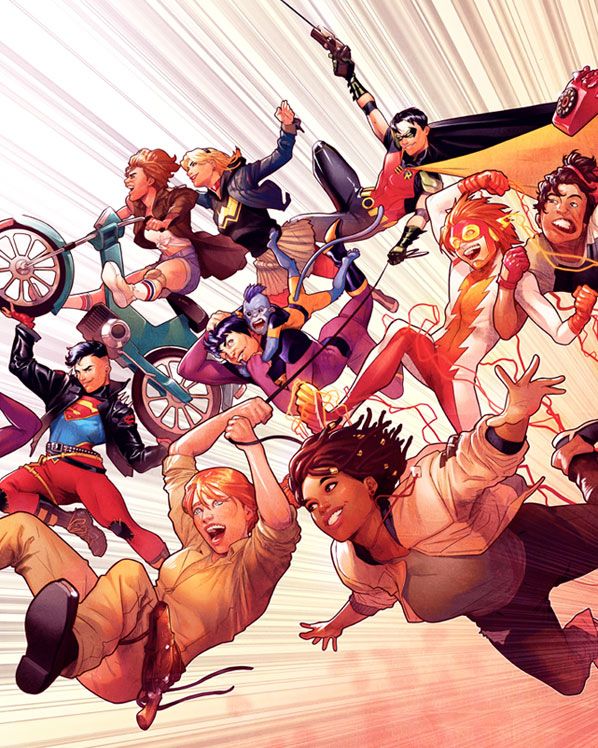
While almost all comics art is in some sense abbreviated, and also while every artist who has produced comics work brings their own individual approach to bear, some broader art styles have been identified. Comic strip artists Cliff Sterrett, Frank King, and Gus Arriola often used unusual, colorful backgrounds, sometimes veering into abstract art.
The basic styles have been identified as realistic and cartoony, with a huge middle ground for which R. Fiore has coined the phrase liberal. Fiore has also expressed distaste with the terms realistic and cartoony, preferring the terms literal and freestyle, respectively.[88]
Scott McCloud has created "The Big Triangle"[89] as a tool for thinking about comics art. He places the realistic representation in the bottom left corner, with iconic representation, or cartoony art, in the bottom right, and a third identifier, abstraction of image, at the apex of the triangle. This allows placement and grouping of artists by triangulation.
The cartoony style uses comic effects and a variation of line widths for expression. Characters tend to have rounded, simplified anatomy. Noted exponents of this style are Carl Barks and Jeff Smith.[88]
The realistic style, also referred to as the adventure style is the one developed for use within the adventure strips of the 1930s. They required a less cartoony look, focusing more on realistic anatomy and shapes, and used the illustrations found in pulp magazines as a basis. This style became the basis of the superhero comic book style since Joe Shuster and Jerry Siegel originally worked Superman up for publication as an adventure strip.[90]
McCloud also notes that in several traditions, there is a tendency to have the main characters drawn rather simplistic and cartoony, while the backgrounds and environment are depicted realistically. Thus, he argues, the reader easily identifies with the characters, (as they are similar to one's idea of self), whilst being immersed into a world, that's three-dimensional and textured.[91] Good examples of this phenomenon include Hergé's The Adventures of Tintin (in his "personal trademark" Ligne claire style), Will Eisner's Spirit and Osamu Tezuka's Buddha, among many others.